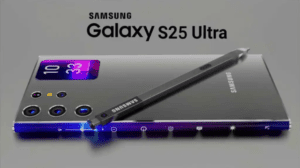Use Of Robots In Medical Field: Revolutionizing Healthcare
Introduction:
Robots in the medical field have brought about a transformative impact.Revolutionizing various aspects of the medical field. They have significantly improved surgical procedures. Simplified the delivery of medical supplies enhanced disinfection processes. Allowed healthcare providers to concentrate more on patient engagement and care. Intel, a leading technology company, provides an extensive. Range of solutions for the development of medical robots. Encompassing surgical-assistance robots, modular robots, and autonomous mobile robots. These cutting-edge technologies are paving the way for a more efficient. Effective and patient-centric medical field system.
In the 1980s, researchers primarily focused on providing surgical assistance through robotic arm technologies as robots made their initial foray into the medical field. However, as time progressed the integration of artificial intelligence (AI).Computer vision and data analytics has brought a remarkable transformation to medical robots. These advancements have significantly expanded the capabilities of medical robots. Enabling them to venture into various other domains within the medical field sector. AI-powered computer vision allows robots to interpret and analyze visual information. While data analytics empowers them to process and make sense of vast amounts of medical data. As a result, medical robots. Now play a crucial role in many different areas of the medical field contributing to improved patient outcomes and enhanced medical practices.
As a result, these medical professionals will have more time and resources at their disposal to focus on providing direct and personalized patient care. This evolution of medical robots holds. The promise of enhancing efficiency, improving patient outcomes and fostering a more patient-centric healthcare environment.
Evaluation Of Robots Use In Medical Field:
The past few years have seen a surge in publications on robots in the medical field coinciding with the COVID-19 pandemic’s impact. The pandemic highlighted the need for robots to function in challenges. Environments and ongoing technological advancements have sparked hope for robots to ease the burden on healthcare workers and enhance patient outcomes. Successfully implementing a robotic system depends on various factors like societal demand.
Regulatory approval and financial considerations. However, predicting the long-term durability and usage of these systems is challenging. Some may see widespread and long-term use.While others might be underutilized or phased out due to factors like ease of use. Perceived benefits, or the availability of newer systems. Once successfully introduced, robots take on various roles in the medical field.
Certain robot groups are specialized for specific areas of use, like surgical robots in hospital theaters. However, other groups, such as pharmacy and socially assistive robots, have broader applications in both inpatient and outpatient settings. While some environments like theaters and rehabilitation units have been extensively studied.Robots in settings like ED and ICU have received less attention. These challenging and less controlled environments may offer potential for further research on robot implementation.
Robotic systems offer a common benefit across various settings and roles.Reducing the need for direct human involvement in tasks. This is evident in socially assistive and telepresence robots. Which can operate in situations requiring limited human presence. For example, during the COVID-19 pandemic, telepresence robots proved useful in conducting safe remote ward rounds.
Identified Robots And Their Roles In Medical Field:
- Surgical
- Rehabilitation and Mobility
- Radiotherapy
- Interventional
- Socially Assistive
- Pharmacy
- Imaging Assistance
- Disinfection
- Delivery and Transport
Surgical:
Surgical robots play diverse roles in assisting surgical procedures from controlling. Instruments to automating surgical table movements and this area has been extensively studied (51% of included studies). The da Vinci Surgical System is the most widely used robot in this field.Enabling minimally invasive surgeries like cholecystectomy, pancreatectomy and prostatectomy.
Rehabilitation and Mobility:
Rehabilitation and mobility robots play. A crucial role in healthcare by assisting and assessing patients to achieve their goals. These robots are used to improve dexterity, reach rehabilitation targets and aid in mobilization.
They find application in both inpatient settings and community rehabilitation centers. Rehabilitation constitutes a significant portion of robots’ roles in healthcare accounting for 39% of reviewed manuscripts.
Most of the robots in this group focus on providing physical support. Support patients during rehabilitation with capabilities. Ranging from single-joint to whole-body support. Robotic tilt tables and wheelchairs are also used for posture training and mobilization.
Radiotherapy:
Radiotherapy robots, specifically the Cyberknife by Accuray (USA) play a vital role in delivering radiotherapy treatment.
This review identified the Cyberknife as the sole robot in this group with 18 related publications. The Cyberknife assists in the precise. Application of radiotherapy and provides image guidance for managing conditions like liver and orbital metastases.
Notably, all the publications were observational in nature and lacked comparator groups. For example, Staehler et al. conducted a prospective case-control trial with 40 patients having renal tumors to evaluate the safety and efficacy of using the Cyberknife for radiotherapy.
Interventional:
Apart from their surgical counterparts. Robots in this group assist with interventional procedures such as ablation in atrial fibrillation.These robots serve various functions from guiding catheters to positioning stents. The review included 17 publications covering nine robots with the most common.
Socially Assistive:
A socially assistive robot can take many forms, such as a robot or an animal-like form, and can provide support in a variety of areas. Geranrly done by humans such as companionship and service provision.
Pharmacy:
There is a group of robots designed specifically to assist with managing and delivering pharmacy services. Including drug storage dispensing and compounding. These robots aim to reduce errors and minimize risks for operators.
The BD Rowa Vmax is an automated system that facilitates medication storage and dispensing upon user request. Berdot et al used this system in a teaching hospital pharmacy to evaluate its return on investment.
Imaging Assistance:
Robots in this category are utilized for their imaging assistance capabilities in various medical fields . The review included ten publications covering eight robots. These robots are primarily robotic camera holders used in theaters.But they can also comprise robotic microscopes for neurosurgery and robots for transcranial magnetic excite.
The most commonly mentioned robots in the literature were Soloassist® (AKTORmed, Germany) and Freehand® (Freehand, UK), both of.Which are robotic camera controllers. These robotic camera holders can be controlled using various inputs such as voice commands and joysticks.
One publication evaluated Solo Assist® in comparison to a human scope assistant in colorectal cancer cases, assessing safety and feasibility. This shows the potential of robotic camera holders in assisting with imaging during surgical procedures.
Disinfection:
Robots are employed for disinfecting clinical areas like wards or outpatient clinics. The review included two studies that evaluated the effectiveness of robotic systems, namely LightStrike™ (Xenex, USA) and Ultra Violet Disinfection Robot® (UVD-Robot) (Clean Room Solutions).
Both of these systems utilize ultraviolet (UV) light for room disinfection with the UVD-R having the added advantage of being able to move autonomously.
Delivery and Transport:
Robots also play a role in transferring items between different areas. One publication included in the review explored. The use of a delivery robot in the intensive care unit (ICU). The TUG Automated Delivery System (Aethon, USA) is a robot that can be loaded by an operator.Then autonomously deliver drugs from the pharmacy department to the ICU. This robotic system streamlines the process of transferring essential items.Contributing to improved efficiency and timely delivery of medications in critical care settings.
Conclusion:
The use of robots in healthcare is continually growing with their applications expanding to various specialties and settings. Among the ten identified roles for robots. Surgical and rehabilitation roles have been extensively studied. However there is a clear need for more super-quality research. Especially in less explored areas like disinfection.
The future of healthcare robots holds promise in remote presence and the capability to perform tasks in challenging environments. Achieving this vision will rely heavily on developing robustness. Infrastructure and network capabilities to ensure successful integration and adoption of robotic systems in healthcare. Embracing these advancements can lead to significant improvements in patient care medical practices and overall healthcare outcomes.














Post Comment